Andersons Crocodile Newt
Never did I think I'd be considered a crocodile hunter in the jungles of Northern Okinawa.
Anderson's Crocodile Newt is pretty much a dinosaur. To be found during specific times of the year and in a few pockets of dense jungles in the Northern areas of Okinawa main island, it is sadly in decline due to habitat loss and illegal pet trade poachers. Classified as Endangered by the IUCN Red List it is also bearer of the auspicious title of 'Natural Monument' in Japan. It emerges on certain nights in Okinawa where if one is lucky one gets to snag a few images and witness the sluggish movements of this unique and enigmatic creature. This is my account of a recent night out in search of Habu Pit Vipers hunting the numerous Frog Species as they go about the continuation of their species as their respective mating seasons get under way.
I had to stop my van, the noise was overbearing. Alas it wasn't a fan-belt, timing belt or any other mechanical issue that forced my hand. It was in fact the amorous overtones of the Green Tree Frogs and the fact that I'd driven right into what seemed the center of the universe of their mating aggregation. The night was clear but damp, recent rains had turned slick country lanes into an aquatic environment that it seemed the Frogs simply couldn't ignore. I wouldn't have been wrong in thinking the whole tally of Okinawa's Green Tree Frog population had descended onto this road as there were just so many of them. And where the Frogs be, the predators be in close proximity.

Mating Green Tree Frogs seemed to be everywhere. Blinded by the desire to mate their aggregation being monitored by predators a plenty!
Alighting my van with a headlamp and flashlight I saw I was close to a leaf litter and mud filled drainage ditch. With some pockets of standing water from the recent rains I took a quick scan to see if I could find any of the amorous amphibians who's collective croaking had literally drowned out the sound of my transport. Within two meters I came across the first of many Himei or 'Princess' Habu, one of three main venomous Pit Viper species known to inhabit the island. These short and stocky snakes that grow to a maximum of around 80cm are the most prevalent of the Pit Vipers to be found in Okinawa. Within the next 100m or so I would end up counting nine different individuals. The most I'd seen in any one single stretch of land of the similar dimension. By the end of the night I would have stopped counting at 17 individuals. They had come out to dine, instinct had forced them into this 'all you can eat' buffet. And who were they to pass up on such an invite?
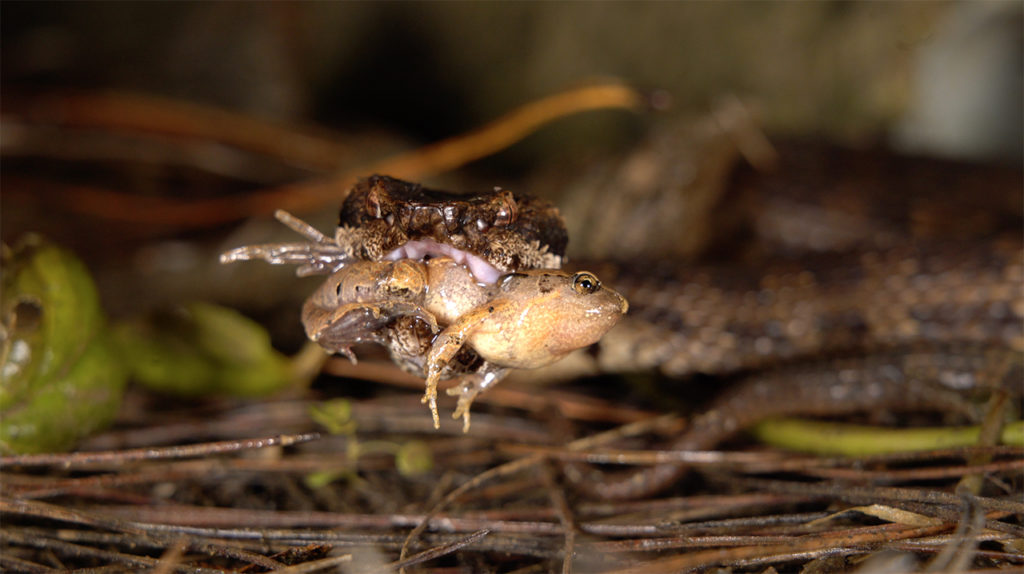
Predators had a pretty easy time of the pickings. Believe it or not this little Frog actually wriggled free and hopped away, pretty darn sharpish too!
Realizing I'd landed into something pretty spectacular I busted out the Sony A7S2 video rig and sparked up the lights. I didn't want to miss documenting this. The third Himei Habu I'd encountered had been lucky enough to snag what seemed to be a Ryukyu Brown Frog for it's evening snack. Just how many of these bite sized morsels this actual snake had dined on that night couldn't be known. Maybe this accounted for it's lackluster attempt at holding onto its dinner. With what seemed like a last ditch effort for freedom the tenacious little amphibian actually managed to wriggle free and hop away, somewhat faster than normal.
That particular frog was soon in amidst the congregation so I couldn't track its progress. I was left wondering if the snake had in fact injected enough venom to kill the frog or not. I hope the little guy is still in the land of the living, maybe even ended up finding a mate for the night. What a story he would have for his fair lady! The Habu was left without a meal.
Habu were everywhere. This would turn out to be the evening so far in all of my 4yrs on Okinawa where I would encounter the most snakes in one night. Well in advance of 20 if I were to include the Akamata and numerous Pryers Keelback snakes also intent on filling their serpentine bellies. Given this first location was pretty small in its total area, probably only about 200sq/m I decided to move to another location where I could potentially encounter more of the Ryukyu Odd-Tooth Snake or 'Akamata' as they are locally known. It was, and remains, an idea to make a short video about my hunt to encounter and document it, an ongoing part of my Snakes of Okinawa video series. Nowhere could I have planned, or envisaged the encounter I was about to stumble into.
Leaving this veritable orgy of both reproduction and predation I headed further inland to a place I had, on occasion, seen numerous Akamata in full predation mode on the predominant Kajika Frogs of the region. These poor little yellow frogs seemed to be at the top of the menu for the whole armada of predators in the dense jungles of Northern Okinawa. Drawing up to the location I could hear the frogs. I initially made a cursory check to see what was around before breaking out the filming gear. If the snakes where there they wouldn't scarper at the lights. The Frogs would maybe get a little unsettled but in general a dimmed light doesn't phase them too much.
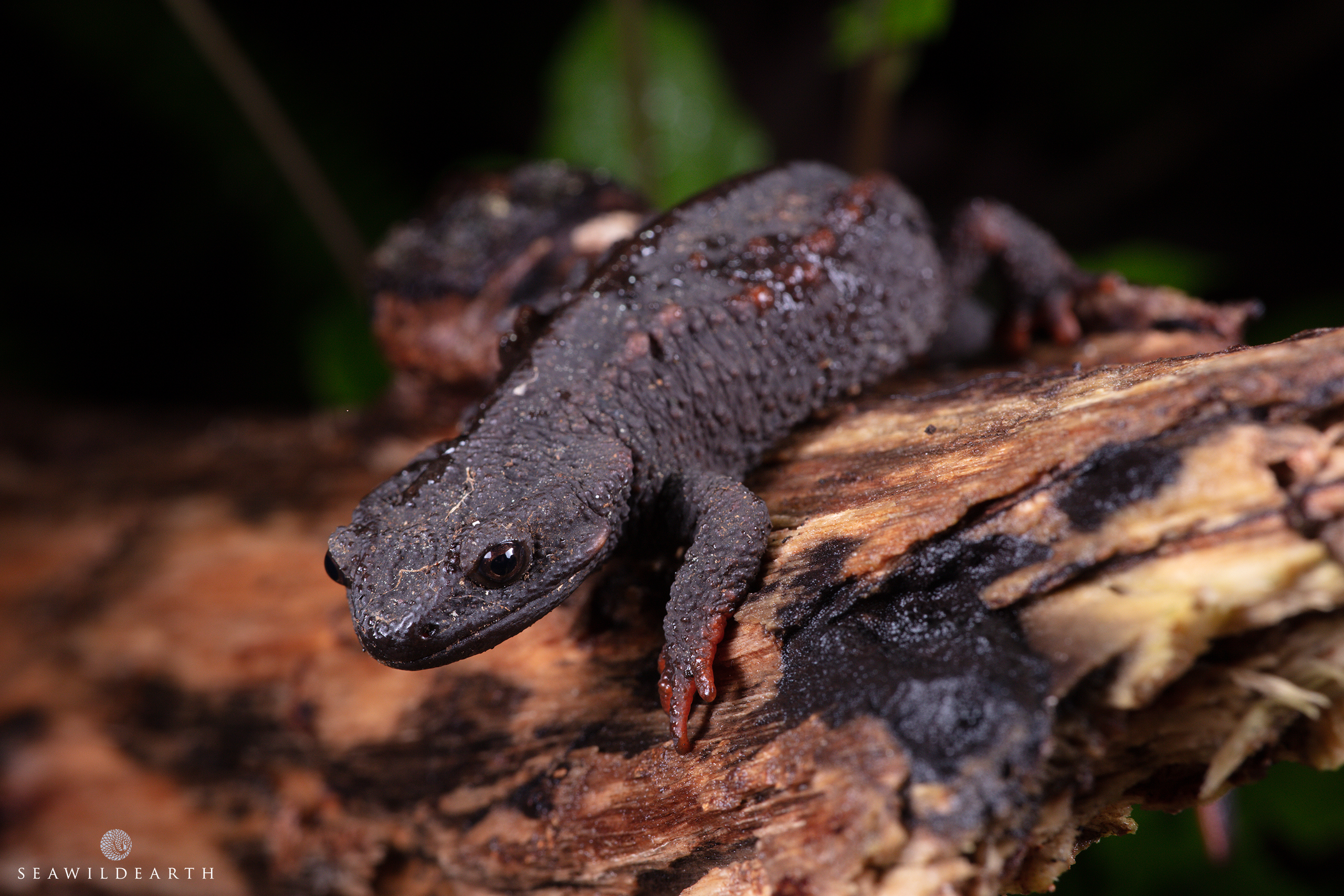
Andersons Crocodile Newt, almost dinosaur in appearance is an amazing thing to encounter. Sadly endangered due to habitat loss and illegal collection this diminutive critter is also classified as a Natural Monument here in Japan.
Not a snake in sight. Plenty of Frogs though, who seemed to have a bigger smile on their faces than normal, and who were making best of the predator free moment. They were out in their droves. The night air damp and steamy, and not just from the humidity of the recent rains. The sound of amphibian love filled the air. Given there were no Akamata I started looking along the drainage ditches that line both overgrown verges of this particular jungle road. It's often a case that some wildlife will get caught in these ditches and have to navigate until they happen on a piece of vegetation to scale and make their escape. I use this predicament as a spotting tactic to try and make the best of a night when looking for wildlife to document. Followers of this blog would remember the recent encounter of a lifetime with a seldom seen and hardly ever documented Silver Habu that I happened upon using this same technique. Drainage ditches are the boss...
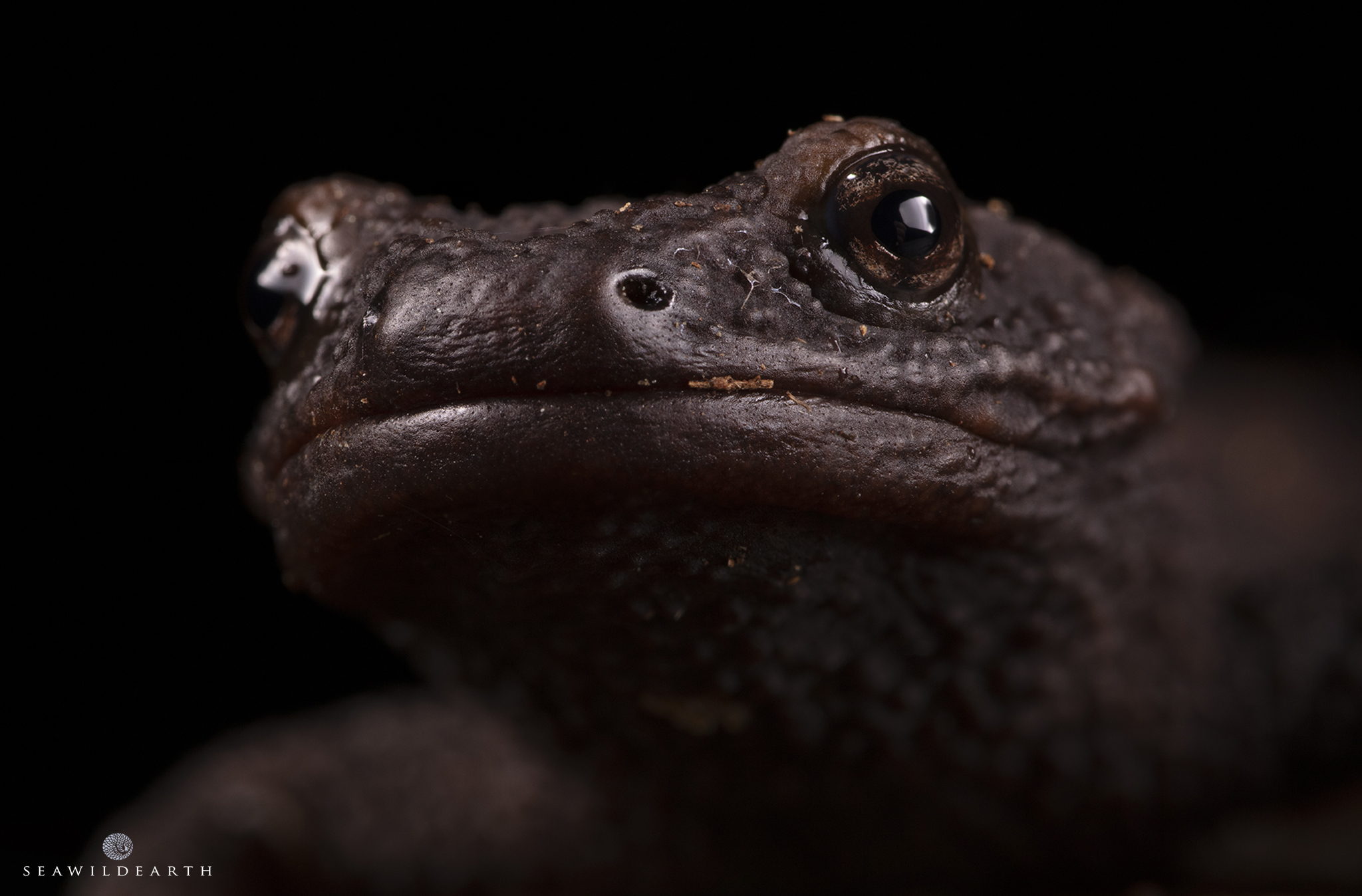
Reluctant to move when they are illuminated this allowed me to shoot this four image focus stack of the larger of the newts encountered. I call this shot 'The Elder'.
I'd walked 200m along one side of the verges away from my parking spot, crossed over and was scouring the returning 200m. I had to stop for a moment as dark shape lay motionless amongst tome of the leaf litter. A large flat head, bulbous eyes and flanks that almost looked like its ribs were protruding its sides. Holy Moly I'd just stumbled on something I'd only ever seen once before, Andersons Crocodile Newt. There is another Newt, the Sword Tailed Newt, that I had in the past confused with this guy, once. This time though there was no denying. Wow, my second only encounter. I set to documenting the moment. Initially filming I noted the little guy was certainly living up to the classification of 'Natural Monument' here in Japan, as like with most monuments it wasn't moving, a muscle. I managed to get a few minutes of profiles, anatomical and head on shots. But it just wouldn't budge. "Be careful what you wish for" is a term that's often bandied around in the wildlife imaging game, I was soon to see why.
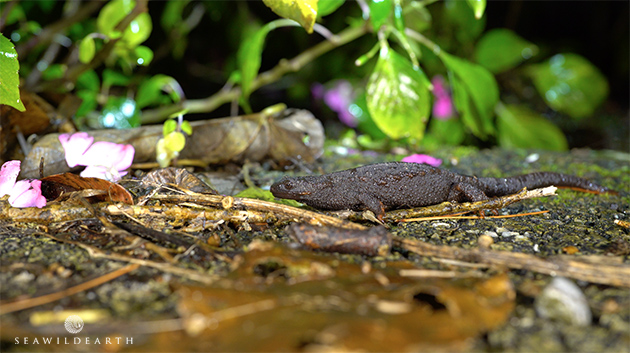
A video still from my Sony A7S2. Now with vegetation and such in the composition it was time to fully document this meeting.
Extinguishing my lights and using my headlamp to illuminate the short run to my van to collect my EOS5DSr to get some photographic records was enough for my impromptu model to make a run for it, but to my benefit. When I returned to where I'd left my video rig the Newt had disappeared. Quite sluggish at best I had to scour the immediate vicinity to try and relocate my little dinosaur buddy. To my benefit it had found some vegetation and clambered out of the ditch onto the road side of the ditch. Now I had foliage and the immediate environment I could include in shots and footage. Game on.
With new found vigor and being accustomed to the lighting the little guy started getting somewhat athletic. Finally with some motion I could document it's negotiating its environment. It got the little speed on if I dare say. An awesome encounter. And it just kept getting better!
As I slowly went about documenting this meeting I could only marvel as I observed through the viewfinder of my Canon EOS5DSr. Marvel at the form factor of this unique little creature. I also found some sadness creeping into the emotional experience. Anderson's Crocodile Newt are listed as Endangered on the IUCN Red List. Being endemic to Okinawa its numbers are in decline due to habitat loss, human encroachment and most insidious of all the illegal poaching to fuel the exotic pet trade. I couldn't for the life of me imagine, as I examined the enhanced textures and forms of this beautiful creature through my macro lens, why anyone would simply want to imprison and own this unique looking critter. I guess I will never understand what drives some people to such drastic measures
Having taken a number of stills and shot some video sequences, and being mindful to not overdo the flash photography I bade farewell to my little model. Moving off I continued to cast an eye into the drainage ditch as I made my walk slowly back to my awaiting vehicle. Maybe I'd lucked into that night, what with the hordes of amorous amphibians in full on orgy mode, that is wasn't too long before another and then another crocodilian form came into view. Maybe the frogs weren't the only ones with amour on their minds. By the end of the night I'd lucked upon four individual Anderson's Crocodile Newts. Each one becoming initially sluggish under the 20w video lights I had attached to my Sony camera. With the A7S2 being such the lowlight beast I found I could simply turn down the light power and up the ISO to a point where I was filming at f8 for 1/60th seeing as I was shooting at 30fps and ISO10,000 with some but not overtly distracting digital noise. Although with a good de-noising software at the end of the day the resulting footage came out looking top drawer!
If you have 11min and 30sec to spare and don't mind wading through loads of Himei Habu, here's the video of this awesome encounter with Anderson's Crocodile Newt. Enjoy.
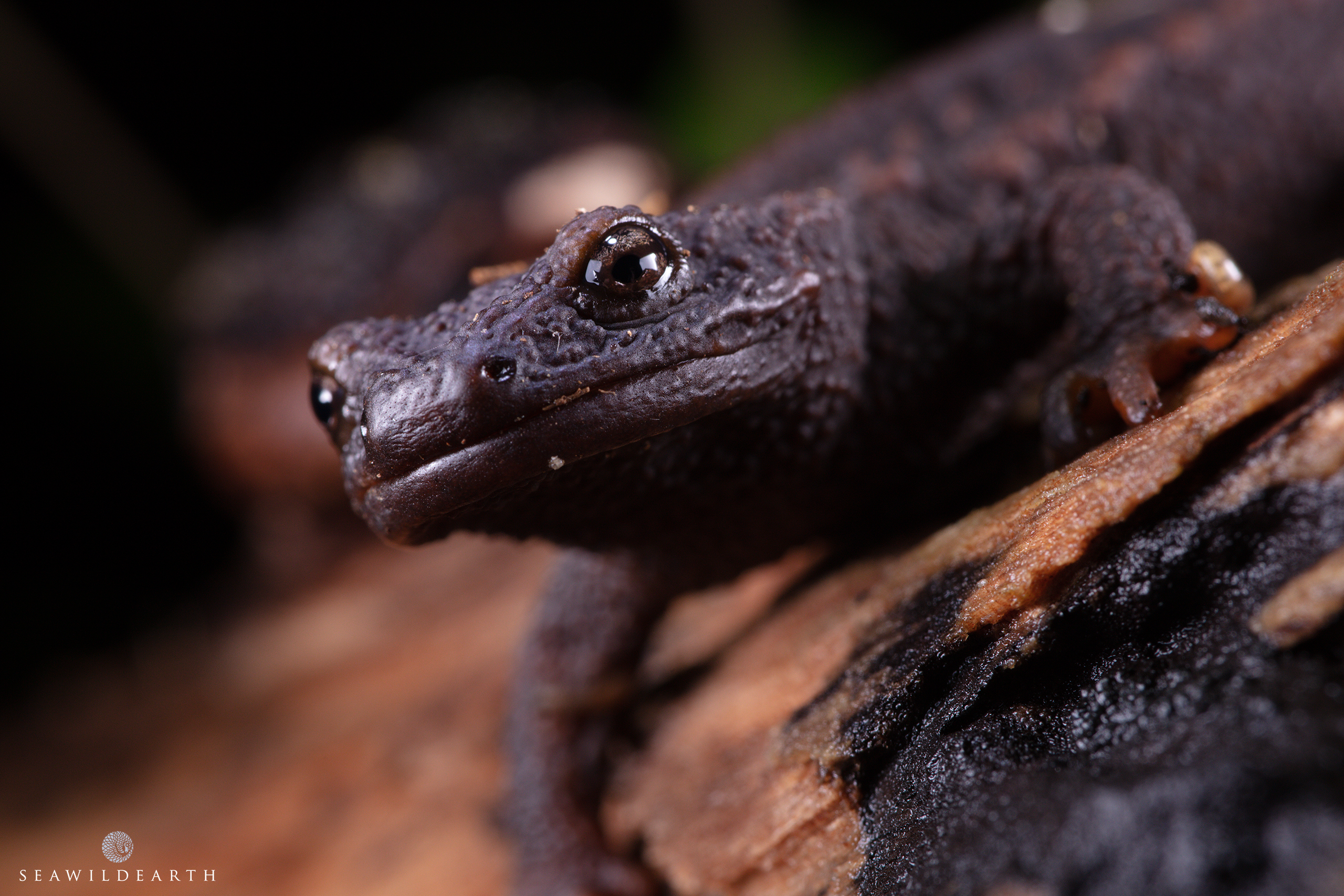
"Yo, Wassup" I don't know why but to me the slightly curved mouth give it a look of slight bemusement as the Newt regards my antics to document it's unique looks and form.
The Ghosted Image
To see the full screen wallpaper behind this post simply click on the small circular icon with the opposing arrows in the top right corner of this page when you scroll to the top. Click a second time to return to the standard page view.
"Leave the Road, Take the Trails".
Pythagoras
About the Author
Internationally recognized as a provider of quality mixed media Mark Thorpe is always on the search for captivating content.

Photographer / Cameraman
Mark Thorpe
Emmy Award Winning wildlife cameraman and Internationally published landscape photographer Mark Thorpe has been an adventurer since he could walk! Spending 17yrs as an Underwater Cameraman at the start of his imaging career the highlight of which was being contracted to work with National Geographic. In that role as a field producer and cameraman he's been privy to a mixed bag of hair raising adventures. For some reason he was always selected for projects relating to large toothed marine predators such as Great White and Tiger Sharks, Sperm Whales and Fur Seals. Additionally he has also been active within Southern Africa on terrestrial projects dealing with a wide array of iconic wildlife.
Currently based in Okinawa, Japan he's always on the lookout for his next big adventure. He shares his exploits online with a totally organic social audience in excess of 200,000. Sponsored by a number of photographic industry manufacturers he is constantly scouring the islands for captivating landscape and oceanscape compositions. Videography wise he continues to create short photographic tutorial videos as well as creating content about the diversity of wildlife within Okinawa and the Ryukyu Islands of Southern Japan.
Mark has just created a Patreon channel where he's hoping to raise an audience of supporters who through small monthly shows of appreciation will allow him to concentrate on the creation of a wildlife and landscape imaging themed YouTube Channel. If you feel that is something you'd like to support you can visit his Patreon Channel for more information.
